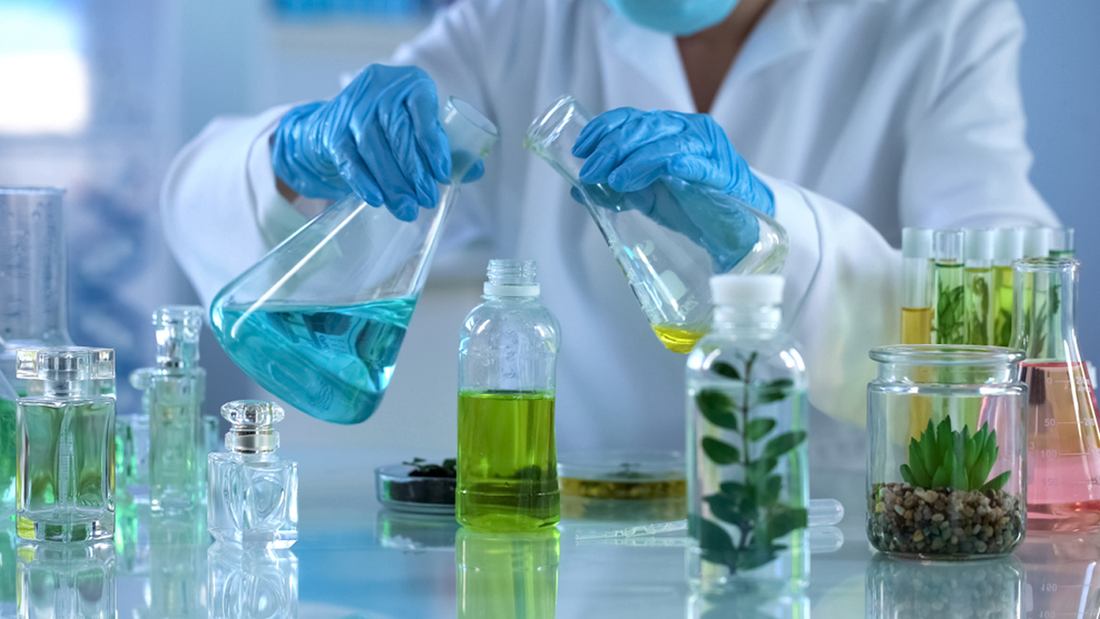Close your eyes, take a deep breath, and imagine yourself in a magical fairyland filled with aromatic scents. Felt enchanted? That’s the power of fragrance! But how do the manufacturers create such an amazing scent? Some people say it's a mystery but researchers believe it's a simple combination of different aromatic fragrances.
Body fragrances are generally divided into three main categories: body perfumes, body mists, and body deodorants. However, we will focus only on mists and perfumes in this article.
Most of these products consist of synthetic ingredients, including fragrances. As both natural and synthetic aroma chemicals offer safer solutions, we need to understand which ones contribute to all types of body fragrances.
It's time to dive into the world of body mists and perfumes to discover what sets them apart. Moreover, we will find out which aroma ingredients make them attractive.
Perfumes vs. mist - A brief overview
Before we jump into the aroma chemicals, let us understand the difference between perfume and mists. Both the body fragrances differ in their concentration, longevity, and intended use. Perfumes contain a higher concentration of essential oils.
That is why they smell stronger compared to mists. You must have noticed they also last longer and are more suitable for special occasions. They often have complex, layered fragrances. Manufacturers decide three different notes while forming a good quality perfume. These notes can evolve.
On the other hand, mists have a lighter concentration of fragrance oils. Makers mix it with more water or alcohol which results in a subtler, more refreshing scent. They usually last for 3-4 hours. Hence, they are ideal for quick, everyday use or if you prefer a gentle fragrance. Mists are also more affordable compared to perfumes.
Role of aroma chemicals
Aroma chemicals play a key role in perfumes and mists. However, their use and impact differ based on the product type.
As we discussed perfumes contain higher concentrations of aroma chemicals. Why? The role of aroma chemicals in perfumes is to define the top, middle, and base notes.
When it comes to mists, aroma chemicals contribute to more straightforward scents. The role of aroma chemicals in mists is to deliver a pleasant, easy-to-wear scent that should not overwhelm your senses.
Popular examples of fragrance compounds:
- Menthone
Menthone has a fresh, minty, and slightly woody scent with hints of sweetness. You can find this component in small amounts mostly in geranium and rose oils. However, it works best in low concentrations. When used in higher amounts (over 1%), menthone’s scent becomes more like peppermint. Hence, it is more suitable mainly for herbal or minty fragrances.
- Pulegone
Pulegone is a ketone. It is an organic compound that contains a carbonyl group. It is a clear, colorless liquid with a pleasant scent of pennyroyal, peppermint, and camphor. One can use Pulegone in flavoring agents, perfumes, and aromatherapy. You can find this ingredient mostly in body mists for women.
- L-carvone
L-Carvone is a fragrance and flavor compound popular for its refreshing, cool, minty aroma. It is widely used in spearmint flavors. Plus, you can find it in spice fragrances. However, it must meet the specifications of the Food Chemicals Codex (FCC) when it comes to perfumes. L-Carvone occurs naturally in spearmint and kuromoji oils. You can also find this flavor in chewing gum, toothpaste, and other pharmaceutical products.
- Eugenol
Eugenol is a naturally occurring compound found in essential oils. You can find this component in clove, cinnamon, and nutmeg. It is commonly used in fragrances to add a warm, spicy, clove-like aroma. The scent of eugenol often evokes memories of autumn. You can find it mostly in men’s perfume.
- Alpha terpene
Alpha-terpineol is a naturally occurring monoterpene alcohol with antioxidant, antiseptic, and anti-hyper nociceptive properties. Alpha-terpineol is used as a fragrance in perfumes, a fat denaturant in soap production, and as a synthetic flavoring agent. It is also a key component in pine oil disinfectants.
You can contact to SBBLG if you need any of the fragrance compounds mentioned in this article. SBBLG is one the leading suppliers of aroma chemicals in India. They can cater to perfumes, toiletries, food, and more.





